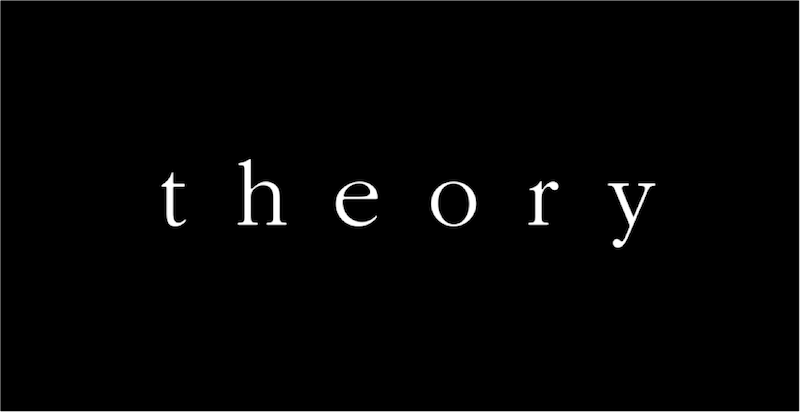Want to understand the different theories of motivation?
We have created the ultimate guide including:
- Types of Motivational Theories
- Intrinsic motivation
- Extrinsic motivation
- Pavlov’s theory
- Theories of Motivation in Psychology
- Hertzberg’s Two-Factor Theory
- Three-Dimensional Theory of Attribution
- Expectancy Theory
- Theories of Motivation in Management
- Motivational Theories in Organizational Behavior
- The Humanistic Approach to Motivation
- Early Theories of Motivation
- Tony Robbins 6 Needs
Theory – A set of assumptions, propositions, or accepted facts that attempts to provide a plausible or rational explanation of cause-and-effect (causal) relationships among a group of observed phenomenon. The word’s origin (from the Greek thorós, a spectator), stresses the fact that all theories are mental models of the perceived reality.
Use the table of contents below to find what you are looking for:
Motivation Theory Overview
Motivational theories abound…
The term ‘motivation’ is one of the most widely used psychological terms out there and it encompasses a host of behaviors. It’s used by psychologists to uncover the underlying reasons why a person does, thinks, or acts in specific ways.
It’s used by corporations and organizations to boost productivity, retain employees, and reduce costs. There are several theories out there to explore and each one focuses on a different set of biological, social, emotional, and cognitive aspects that impact behavior.
Types of Motivational Theories
From psychology to organizations, relationship challenges to career oriented tasks, motivational theories abound. Some of the most common involve intrinsic vs. extrinsic motivation, classical and operant conditioning, incentive motivation, and motivating operations.
Intrinsic motivation is based on the internal desire to seek out new challenges, to gain knowledge, and to determine how likely the individual is to achieve his or her goals.
Extrinsic motivation involves putting effort into a specific set of tasks in order to accomplish a specific and measurable goal. The forces of extrinsic motivation come from outside the person.
Classical and operant conditioning involve behavioral theories. For this theory, environmental or physical stimuli have the greatest impact on motivational factors. These would not be conditioned, but rather more ‘instinctual,’ though instinct is a loose term that should not be relied upon for scientific explanations by itself.
Incentive motivation focuses on reinforcement. Pavlov discovered that dogs would respond to a bell when they believed it was dinner and eventually would exhibit the same behaviors no matter whether food was present or not. Having an incentive may cause reinforcement of a set of behaviors.
Motivating operations, sometimes referred to as MOs, does not predict future behaviors, as would be the case with operant conditioning, but rather looks to the past to determine present behaviors and motivations.
Theories of Motivation in Psychology
While this is not an all-encompassing list, five of the most commonly used motivational theories in psychology are:
- Hertzberg’s Two-Factor Theory
- Maslow’s Hierarchy of Needs
- Three-Dimensional Theory of Attribution
- Expectancy Theory
- Hawthorne Effect
Digging deeper into these varying theories(which we will do below) often sheds more light on how and why motivation affects people in widely varying degrees.
Hertzberg’s Two-Factor Theory
This is also sometimes referred to as the two-factor theory and was developed by Frederick Hertzberg in the 1950s. He studied employee satisfaction and based on 200 subjects in his test study, he found that there were two key factors impacting motivation:
-Motivator factors, which determine whether an employee will work harder. Some of these factors include enjoyment, feeling appreciated, and having opportunities for advancement.
-Hygiene factors, which can cause someone to be unhappy in their work environment. Some of these factors can be low wages, poor or lacking benefits, and faulty relationships with supervisors.
Maslow’s Hierarchy of Needs
Based on this theory by Abraham Maslow, only when the five most basic needs are met will a person be motivated to perform or act on any task. The five levels of this hierarchy are:
-Physiological. If a person doesn’t have the basic necessities to survive, there’s little motivation.
-Safety. This can include physical, emotional, and financial security.
-Feelings of love. Being wanted and feeling like one belongs provide strong motivation.
-Esteem. The desire for earning respect of others.
-Self-actualization. In this, a person is driven by a desire to achieve everything he/she possibly can.
Three-Dimensional Theory of Attribution
In this theory, Bernard Weiner estimated that the reason people do what they do is based on three components: stability, locus of control, and controllability. Stability essentially focuses on one’s perceptions of their own performance or ability.
Locus of control is based on whether internal or external factors are mitigating certain circumstances. Controllability is determined by how much the subject believes they could have impacted. Lower controllability usually leads to less motivation.
Expectancy Theory
Based on three elements -expectancy, instrumentality, and valence- this theory states that people will determine how they’ll behave based on the expected outcomes.
Hawthorne Effect
For this theory, researchers discovered that test subjects had a tendency to work harder and perform better when they knew or believed someone was watching them. When actions are being observed, it is theorized, some subjects step up in a way they might not if they believe their actions are secluded.
Simply put…people are motivated more to take action when they think someone is watching them because they care about either:
A. Being validated
B. Being scrutinized
Theories of Motivation in Management
Many of the theories on motivation that are found in management and organizational behavior overlap with psychology. Psychology is, after all, the study of human behavior and conditioning.
Hierarchy of Needs and the Hawthorne Effect are both commonly focused on within management circles. Some leaders also rely on Theory X and Theory Y as well as Equity Theory.
Theory X essentially focuses on employees who avoid responsibility when possible and don’t enjoy work while Theory Y employees put in more effort, especially when they feel they have more control within the workplace.
With Equity Theory, John Stacey Adams argued that when employees felt they were being treated fairly they were more motivated, but when they measured their treatment as unfair, they were less likely to put forth a strong effort.
Motivational Theories in Organizational Behavior
Organizations, including major corporations, political organizations, small businesses, non-profits, and much more are focusing on motivation for a wide range of purposes.
Some of those include:
-Turning negative attitudes into positive ones
-Minimizing labor turnover
-Reducing ‘sick days’ being used
-Welcoming new changes to the workplace
-Boosting efficiency and productivity
-Creating a more robust and positive atmosphere in the workplace
As can be seen, there are many theories on motivation, each with their own focal points. In trying to understand motivation on a personal or group level, there are numerous factors that must be taken into account and one theory may be better suited in specific circumstances than others.
What is the Humanistic Approach to Motivation?
Every creature on Earth is motivated by something, but Abraham Maslow desired to understand what motivated humans, and that’s what most psychologists effort to do. Most people are driven to fulfill certain needs and the hierarchy he developed (see above) aimed to portray the various levels of needs.
When a person does not feel completely fulfilled, he or she will likely have unmet needs. Whether those ‘needs’ are absolute necessities (like clothing, food, shelter, etc.) is irrelevant. It’s the perception of the individual of those needs that matters.
For a humanistic approach to motivation, what matters most is the internal factors that perceive something that’s missing.
What Are the Early Theories of Motivation?
The key early theories of motivation involve reinforcement theory and goal setting theory. With goal setting, a person would establish goals and therefore set out to accomplish them, but would require appropriate feedback along the way to assist in the completion of those goals.
Goals help to provide direction and according to Edwin Locke, they are essential to proper motivation. If you don’t have a goal, how could you be motivated to do anything?
Reinforcement theory, on the other hand, focuses on the results of the work being done. Without proper reinforcement (positive or negative), there would be no reason to push forth and therefore little to no motivation to perform a specific task.
Tony Robbins 6 Needs Theory
While many of the theories were developed over the last century, in the 21st century, one of the main teachers of motivation, Tony Robbins, has developed what he calls the “6 Needs” which include:
1. Certainty & Comfort
We all have the need to know that we are safe and will be taken care of. Most of the people who end up in poverty or struggle through life have the belief their needs won’t be met and therefore it becomes a self-fulfilling prophecy.
2. Uncertainty & Variety
We all have the need to be challenged and for there to be enough variety in life to keep us engaged and interested, otherwise life would become mundane and boring.
3. Significance
We all have the need to feel important and unique. That in some way, shape, or form, we are different and special.
4. Love & Connection
We all have the need to feel loved and appreciated by family and friends.
5. Growth
We all have the need to grow and improve ourselves each day.
6. Contribution
We all have the need to give back to our community and society and play a significant role in being helpful.
Tony proclaims that when these six needs are met, it will drive us to become motivated to continue living with passion because it meets our needs of fulfilling our purpose in life.
RESOURCES



